Reactivity of zinc hexazene complexes
Reactivity of zinc hexazene complexes
(MesnacnacZn)2(μ-η2:η2-N6Ph2) containing the sterically less demanding Ph-substituent is a powerful hexazene transfer reagent in reactions with transition metal and main group metal complexes. Reactions of (MesnacnacZn)2(μ-η2:η2-N6Ph2) with equimolar amounts of Me2Zn, Me3Al and MeLi occurred with elimination of MesnacnacZnMe and subsequent formation of the heteroleptic and heterobimetallic hexazene complexes (Scheme 10).
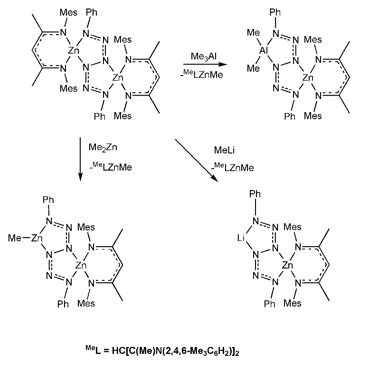
Scheme 10: Reactions of (MesnacnacZn)2(μ-η2:η2-N6Ph2) with one equivalent ZnMe2, AlMe3 and MeLi.
The reaction of (MesnacnacZn)2(μ-η2:η2-N6Ph2) with 2 eq ZnMe2 leads under MesnacnacZnMe elimination to the new hexazene complex (MeZn)2(μ-η2:η2-N6Ph2).[21] Intermolecular Zn∙∙∙N interactions result in the formation of ladder-like one-dimensional polymeric structure (Figure 7).
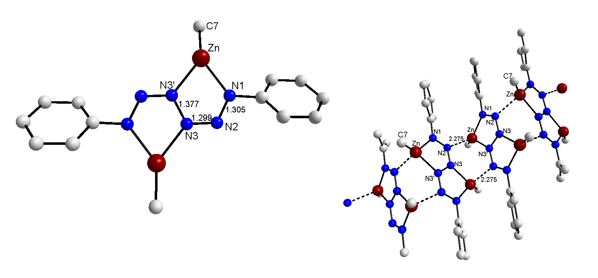
Figure 7: Molecular structure of (MeZn)2(μ-η2:η2-N6Ph2) and intermolecular interactions.
The intermolecular Zn∙∙∙N interactions can be disrupted in reactions with stronger Lewis bases such as acetonitrile or pyridine, resulting in the formation of the Lewis base-coordinated hexazene complexes (MeZn)2(μ-η2:η2-PhN6Ph)(CH3CN)2 and (MeZn)2(μ-η2:η2-PhN6Ph)(C5H5N)2 (Figure 8).
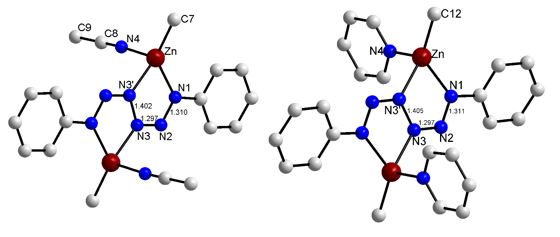
Figure 8: Molecular structures of (MeZn)2(μ-η2:η2-N6Ph2)(CH3CN)2 (left) and (MeZn)2(μ-η2:η2-N6Ph2)(C5H5N)2 (right).
(MeZn)2(μ-η2:η2-N6Ph2) also reacts with H-acidic ligands such as HC(C(Me)NPh)2 with CH4 elimination, yielding the new hexazene complex (PhnacnacZn)2(μ-η2:η2-N6Ph2) (Figure 9).
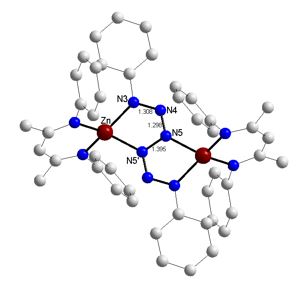
Figure 9: Molecular structure of (PhnacnacZn)2(μ-η2:η2-N6Ph2).
Reactions with elemental chalcogenes and Diphenyl-Dichalcogenides
Reactions of Zn(I) complexes with elemental chalcogenes E or chalcogenophosphoranes Bu3P=E (E = Se, Te) failed to give the expected insertion products. Reactions of Mesnacnac2Zn2 with elemental sulfur occurred with oxidation of the γ-carbon atom and formation of ZnS and [MesnacnacS]2Zn (Figure 10).[22] This reactivity of nacnac ligands is also known in the chemistry of Cu(I) complexes.[23]
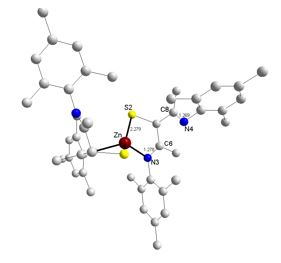
Figure 10: Molecular structure of (MesnacnacS)2Zn.
In contrast, reactions of Mesnacnac2Zn2 with one equivalent of Ph2E2 (E= S, Se, Te) yielded the zinc chalcogenide dimers [MesnacnacZnEPh]2, which can be furhter oxidized in reactions with O2 to the corresponding metalated chalcogenic acids [MesnacnacZnEPhO2]2 (Figure 11).[24]
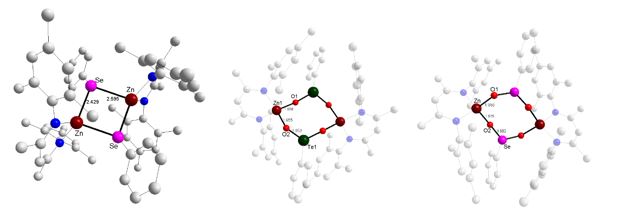
Figure 11: Molecular structure of [MesnacnacZn-SePh]2 and the metalated selenic and tellurinic acid.
References
[1] I. Resa, E. Carmona, E. Gutierrez-Puebla, A. Monge, Science 2004, 305, 1136.
[2] E. Carmona, A. Galindo, Angew. Chem. Int. Ed. 2008, 47, 6526.
[3] (a) Y. Kan, J. Mol. Struct. Theochem 2007, 805, 127. (b) A. Velazquez, I. Fernández, G. Frenking, G. Merino, Organometallics 2007, 26, 4731. (c) M. R. Philpott, Y. Kawazoe, Chem. Phys. 2007, 333, 201. (d) K. N. Pandey, J. Organomet. Chem. 2007, 692, 1058. (e) H. Wang, C. Yang, B. Wan, K.-L- Han, J. Theor. Comp. Chem. 2006, 5, 461. (f) M. R. Philpott, Y. Kawazoe, J. Mol. Struct. Theochem 2006, 776, 113-123. (g) J. W. Kress, J. Phys. Chem. A 2005, 109, 7757. (h) Y. Xie, H. F. Schaefer III, R. B. King, J. Am. Chem. Soc. 2005, 127, 2818.
[4] S. P. Green, C. Jones, A. Stasch, Science 2007, 318, 1754.
[5] S. J. Bonyhady, C. Jones, S. Nembenna, A. Stasch, A. J. Edwards, G. J. McIntyre, Chem. Eur. J. 2010, 16, 938.
[6] D. Schuchmann, U. Westphal, S. Schulz, U. Flörke, R. Boese, Angew. Chem. Int. Ed. 2009, 48, 807.
[7] D. Schuchmann, S. Schulz, U. Westphal, M. Bolte, Organometallics 2009, 28, 1590.
[8] S. Schulz, S. Gondzik, D. Schuchmann, U. Westphal, L. Dobrzycki, R. Boese, S. Harder, Chem. Commun. 2010, 46, 7757.
[9] S. Schulz,* D. Schuchmann, I. Krossing, D. Himmel, D. Bläser, R. Boese, Angew. Chem.Int. Ed. 2009, 48, 5748.
[10] S. Gondzik, D. Bläser, C. Wölper, S. Schulz, Chem. Eur. J. 2010, 16, 13599.
[11] S.J. Bonhady, S.P. Green, C. Jones, S. Nembanna, A. Stasch, Angew. Chem. Int. Ed 2009, 48, 2973.
[12] C. Jones, L. McDyre, D.M. Murphy, A. Stasch, Chemm. Comm. 2010, 1511.
[13] M. Ma, A. Stasch, C. Jones, Chem. Eur. J. 2012, 10669.
[14] J. Gao, S. Li, Y. Zhao, B. Wu, X.J. Yang, Organometallics 2012, 31, 2978.
[15] A. Stasch, Chem. Eur. J. 2012, 18, 15105.
[16] S. Gondzik, S. Schulz, D. Bläser, C. Wölper, R. Haack, G. Jansen, Chem. Comm. 2014, 50, 927.
[17] A. Stasch, C. Jones, Dalton Trans. 2011, 40, 5659.
[18] R.E. Cowley, J. Elhaik, N.A. Eckert, W.W. Brennessel, E. Bill, P.L. Holland, JACS 2008, 130, 6074.
[19] J.A. Bellow, P.D. Martin, R.L. Lord, S. Groysman, Inorg. Chem. 2013, 52, 12335.
[20] L. Fohlmeister and C. Jones, Aust. J. Chem. 2014, 67, 1011.
[21] S. Gondzik, C. Wölper, R. Haack, G. Jansen, S. Schulz, Dalton Trans., submitted.
[22] S. Gondzik, D. Bläser, C. Wölper, S. Schulz, J. Organomet. Chem. 2015, 783, 92.
[23] E.C. Brown, N.W. Aboelella, A.M. Reynolds, G. Aullon, S. Alvarez, W.B. Tolman, Inorg. Chem. 2004, 43, 3335.
[24] S. Gondzik, S. Schulz, D. Bläser, C. Wölper, Chem. Comm. 2014, 50, 1189.
